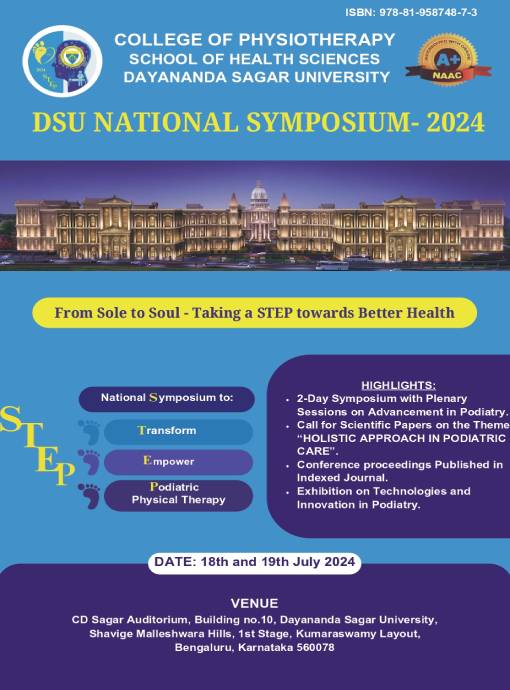Effectiveness of Maitland Mobilisation with and without Kinesio Taping on Pain and Upper Limb Function in Patients with Carpal Tunnel Syndrome – Quasi-Experimental Study
DOI:
https://doi.org/10.18311/DSUPHY/9788195874873/2024/047Keywords:
Boston Carpal Questionnaire – Symptom and Function; Carpal Tunnel Syndrome; Kinesio Taping; Maitland MobilisationAbstract
Background: In Carpal Tunnel Syndrome (CTS), the median nerve is compressed at the level of the carpal tunnel in the wrist. This entrapment manifests as unpleasant symptoms like tingling, or numbness in the palm that extends to the fingers. As the disease progresses, individuals report decreased grip strength, hand weakness, and restricted movements.
Aim: To assess the effectiveness of Maitland Mobilisation with and without Kinesio taping on pain and upper limb function in patients with carpal tunnel syndrome.
Method: Twenty-four Subjects with Carpal Tunnel Syndrome were divided into 2 Groups. Group A was given Maitland Mobilisation and Group B was given Maitland Mobilisation along with Kinesio taping 3 times for 3 weeks. Outcome measures used were - Boston Carpal Questionnaire – Symptom and Function, Upper Limb Functional Index, and Visual Analog Scale for Pre, Post Intervention, and follow-up.
Result: There was a difference (p < 0.05) in BCTQ-S (Pre-test, Post-test, and Follow up), BCTQ- F (Post-test, and Follow up), UEFI (Pre-test, Post-test, and Follow up), and VAS (Post-test, and Follow up); between both groups. The Repeated measures ANOVA was used to compare BCTQ-S, BCTQ-F, UEFI, and VAS within the groups. There was a difference (p < 0.05) in BCTQ-S, BCTQ- F, UEFI as well as VAS within both Group - A and Group - B from pre-test to follow-up.
Conclusion: Both interventions have shown effectiveness for CTS. Between Groups, Group B was more effective than Group A.
 Sanchita Chatterjee
Sanchita Chatterjee
